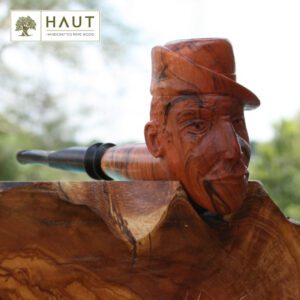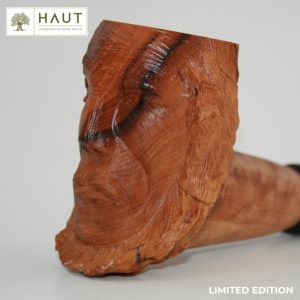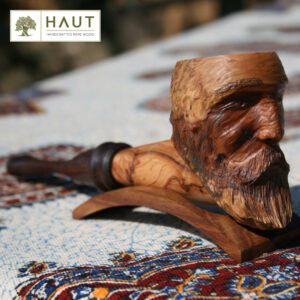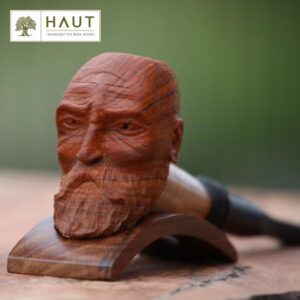Description
HAUT smoking pipes are individually handcrafted from African Wild Olive wood, in the image of an inspirational hero. The beauty of the pipe is linked to its historical value, where the deeds of these heroes will inspire you every time you pick up, hold, and smoke your pipe. The wild olive used, comes from a specific area in the Northern Cape where the trees grow extremely slow due to the hot, dry summers and the cold winters. This makes for a unique grain feature inside the wood that adds to the beauty of each of our pipes.
All smoking pipes are crafted in the image of inspirational Boer heroes. Engraved on the bottom of each pipe is the name of the Boer war hero. Each pipe has its own unique serial number that comes complete with a certificate of authenticity. The stem of the pipe is turned and shaped by hand, from African ironwood. The ironwood gives a smooth natural feeling. The natural wood on the pipe and stem adds to the unique flavour of the smoking experience. Each pipe comes in its own leather carry pouch, with various compartments for the pipe, tobacco, pipe cleaning tool, pipe stand and matches. The story of each hero is summarised on the outside of the pipe leather pouch.
Product Contents
All of our limited edition pipe kits include the following :
Limited Edition Smoking Pipe
Pouch – Leather Cow Hide
Pipe Tool
Pipe Stand
Certificate of Authenticity
Tobacco
Matches
Pipe Cleaners
Each limited edition pipe is individually numbered and comes with a certificate of authenticity stamped by the artist.
How To Smoke The Pipe
The entire idea of smoking a pipe is for relaxation. This is not about smoking as fast as possible, then you might as well stick to cigarettes. Smoking a pipe is a process that not only looks cool but will give you true memory-savouring time.
Pipe smoking is not about dragging the smoke into your lungs. It is about tasting the smoke. A pipe is puffed and not dragged.
Hold the body of the pipe in the palm of your closed hand. This way you can feel if the pipe is getting too hot while smoking it. If the pipe is getting too hot, you are burning the actual wood of the body of the pipe. Stop, give the pipe time to cool down and then re-light it a bit later.
First step: Take a drag on the empty pipe to ensure that the pipe is clean and does not have any obstructions, stuck inside the pipe.
The second step is to pack the pipe: Take some tobacco from the pouch and spread it on a clean surface. Make sure that it is not sticking tighter and that all the pieces are the same size with no hard or bulky pieces in.
Next, you want to pack the tobacco into the pipe. This is done by a three-pinch method. First, pinch a bit of tobacco and stick this into the pipe. This needs to be done softly and gently like you would shake a child’s hand. You can use the pipe tool to push the tobacco down to the bottom of the pipe.
The next pinch would be like shaking a woman’s hand. The tobacco needs to go a bit firmer and tighter into the pipe.
The last pinch is like shaking a man’s hand. This needs to be the firmest of the three pinches.
Once the pipe is packed. Take a finger on the top part of the pipe and tobacco and rotate it clockwise to cork the tobacco inside the pipe. This makes the tobacco firmer in itself and will improve the burning of the tobacco.
Take a drag from the pipe to make sure the tobacco is not packed too tightly. This must feel like dragging cooldrink through a straw.
The third step is to pre-light: The pre-light is done by slowly puffing on the pipe while you rotate the lighter or match flame over the tobacco without touching the tobacco. The aim is to dry out the tobacco with the pre-light.
Once this is done. Use the pipe tool to compact the tobacco again.
The next step is to light and smoke the pipe.
Use a lighter or match and rotate the flame over the entire top surface area of the tobacco to get an even light pipe. Puff while you light the pipe.
You can now smoke with ease. Remember not to overheat the pipe.
Once finished smoking you can shake out the tobacco by tapping the pipe on the bottom of your shoe. This gives a soft surface that will not crack the wood on the pipe.
How To Maintain Your Pipe
The pipe is made from untreated wood so that the smoking will not be toxic to you.
The leather pouch could dry out your pipe and the frequent treatment with teak oil will be good for the pipe.
Before oiling the pipe, ensure that it is clean and dry. Separate the two parts of the pipe. Oil both parts of the pipe lightly.
You can use the pipe tool to scrape off any unwanted tar build-up inside the pipe. You can use the cotton rods to clean inside the stem and the draft hole inside the pipe.

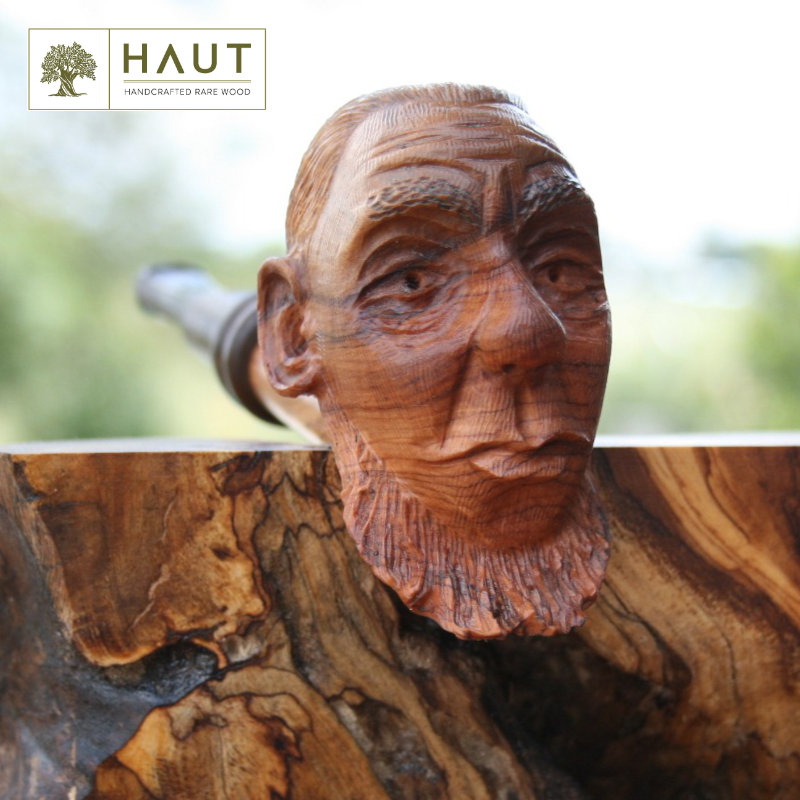
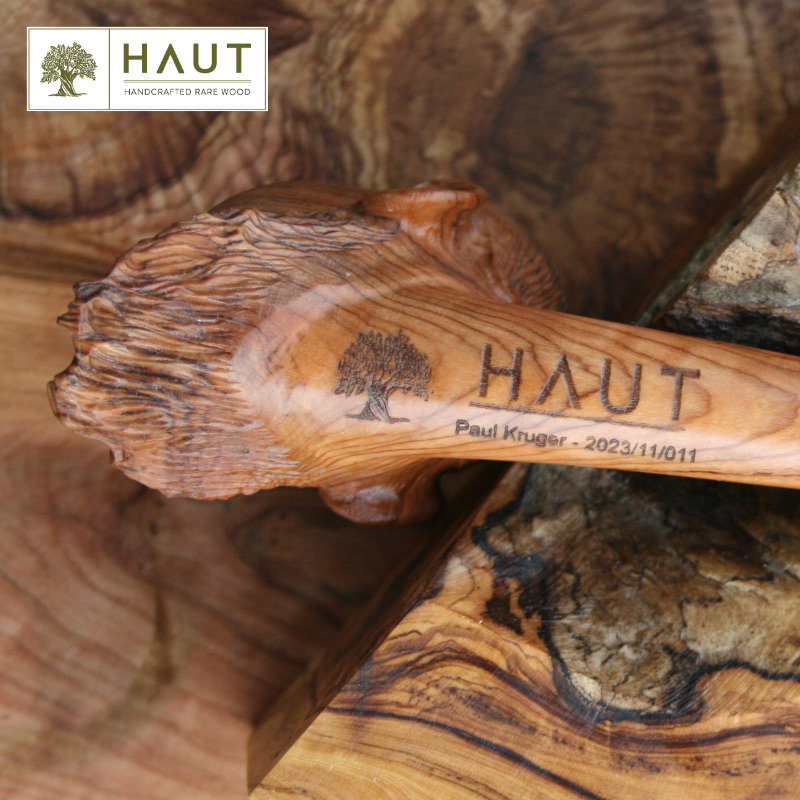
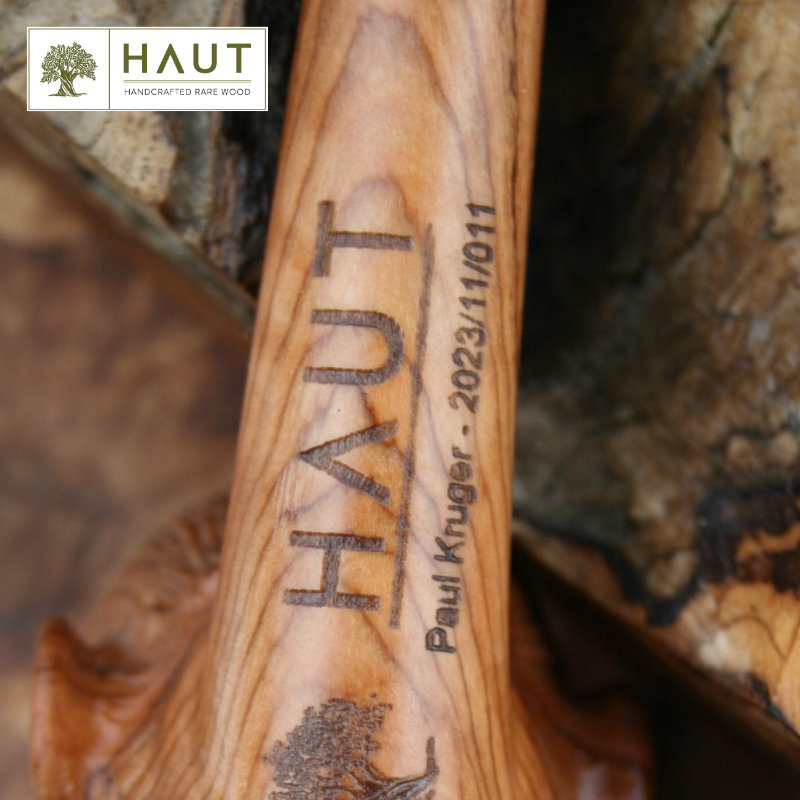
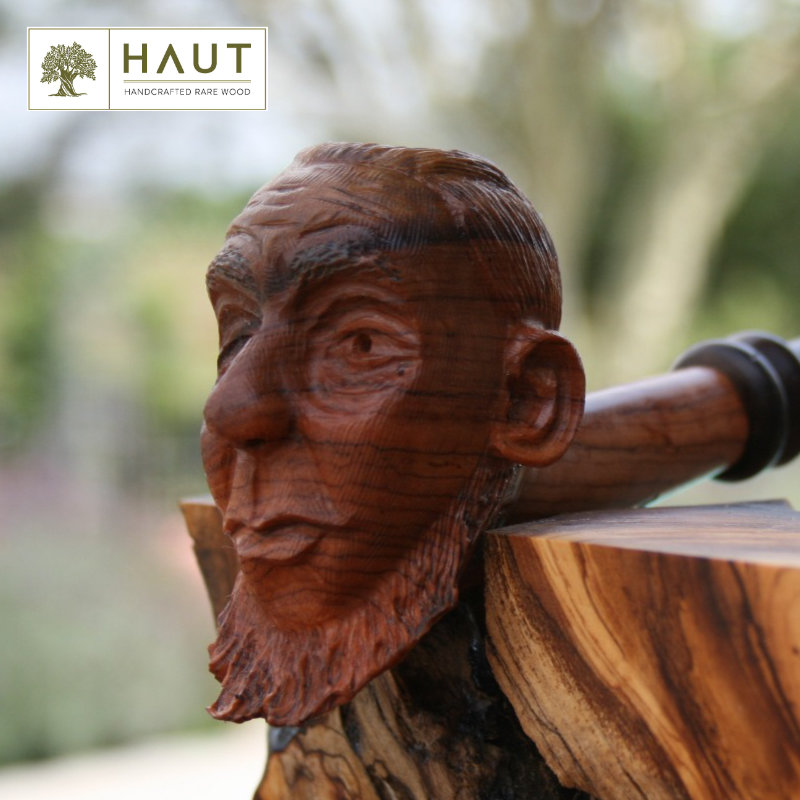
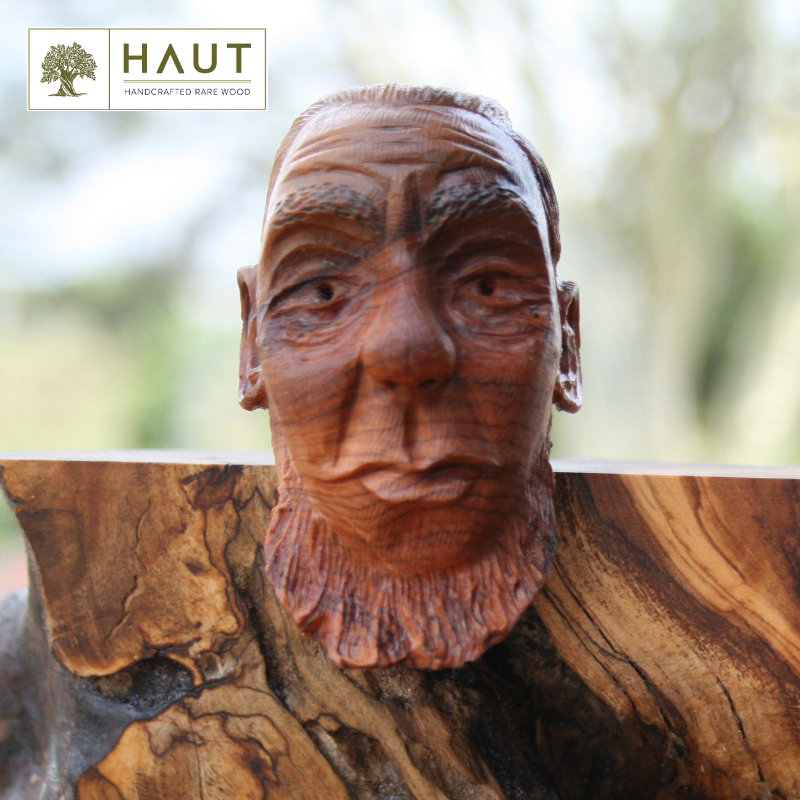
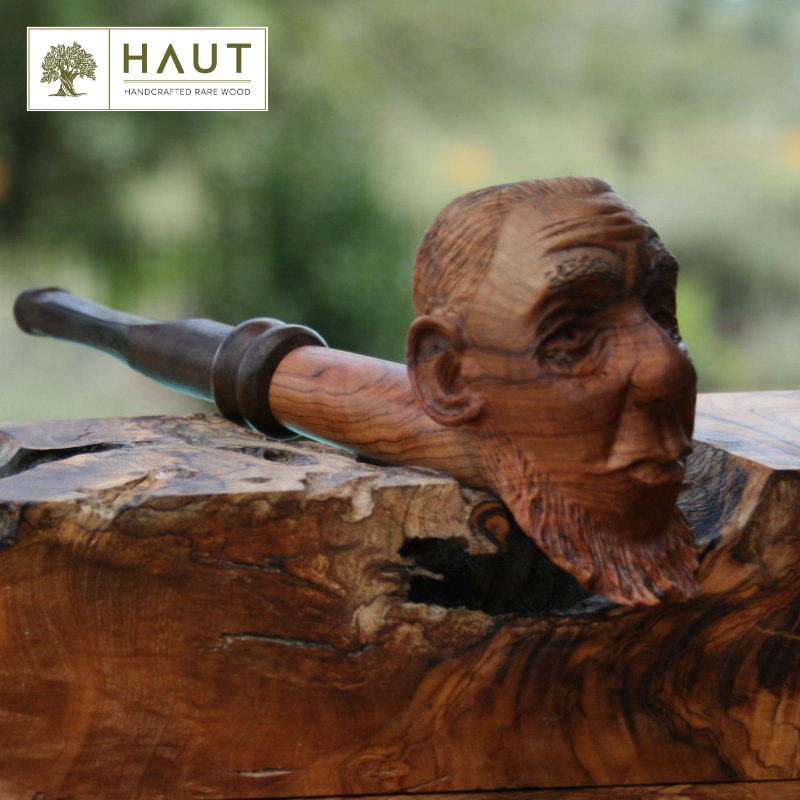
 Stephanus Johannes Paulus Kruger
Stephanus Johannes Paulus Kruger